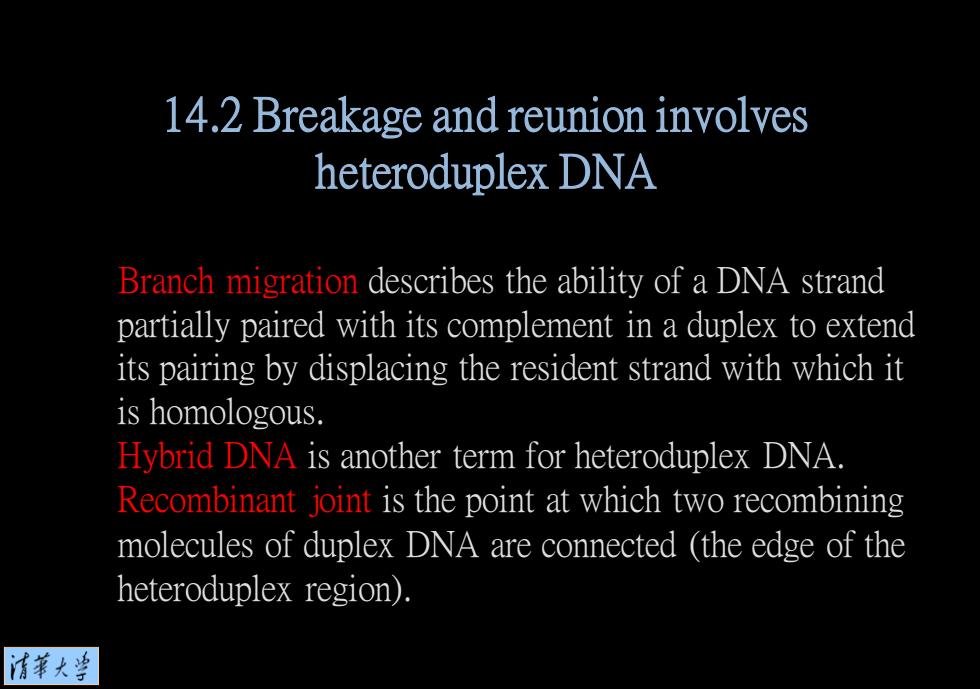
14.2 Breakage and reunion involves heteroduplex DNA Branch migration describes the ability of a DNA strand partially paired with its complement in a duplex to extend its pairing by displacing the resident strand with which it is homologous. Hybrid DNA is another term for heteroduplex DNA. Recombinant joint is the point at which two recombining molecules of duplex DNA are connected (the edge of the heteroduplex region) 情菜大学
Branch migration describes the ability of a DNA strand partially paired with its complement in a duplex to extend its pairing by displacing the resident strand with which it is homologous. Hybrid DNA is another term for heteroduplex DNA. Recombinant joint is the point at which two recombining molecules of duplex DNA are connected (the edge of the heteroduplex region). 14.2 Breakage and reunion involves heteroduplex DNA
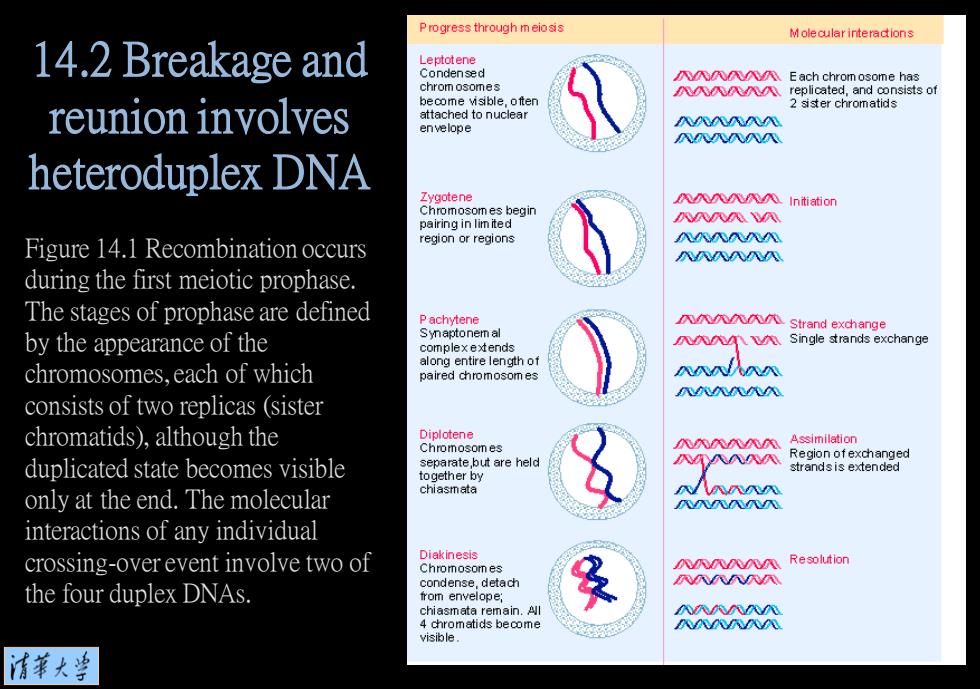
Progress through meiosis Molecular interadtions 14.2 Breakage and Leptotene Condensed 八八入Each chrom osome has chrom osomes 八入入八replicated,and consists of become visible,often reunion involves 2 sister chromatids attached to nuclear envelope 八风入N八N N八八八N heteroduplex DNA Zygotene Chromosom es begin 入入入入Initiation pairing in lim ited 八八风N Figure 14.1 Recombination occurs region or regions N凡入八八八 八风八八八风 during the first meiotic prophase. The stages of prophase are defined P achytene 八M个入入X八Strand exchange by the appearance of the Synaptonem al complex e对ends 八八Single strands exchange along entire length of chromosomes,each of which paired chromosom es 八N人八N 风N八八八N consists of two replicas (sister chromatids),although the Diplotene Chromosomes 八入入入Assimila铺on duplicated state becomes visible separate,but are held 八代八八八八 together by only at the end.The molecular chiasmata NMNN八 interactions of any individual crossing-over event involve two of Diakinesis Chromosomes VXVK Resolution 八八 the four duplex DNAs. condense,detach from envelope; chiasmata remain.All N入A八N 4 chromatids become 八NNN八风 visible. 清苇大当
Figure 14.1 Recombination occurs during the first meiotic prophase. The stages of prophase are defined by the appearance of the chromosomes, each of which consists of two replicas (sister chromatids), although the duplicated state becomes visible only at the end. The molecular interactions of any individual crossing-over event involve two of the four duplex DNAs. 14.2 Breakage and reunion involves heteroduplex DNA
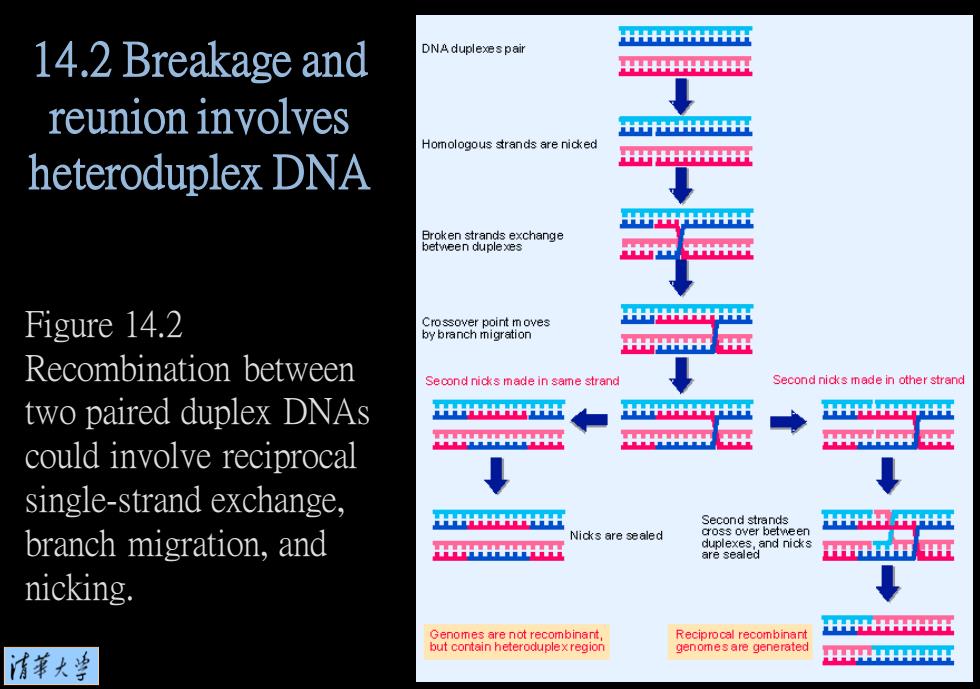
HHHHHHHHHHHH 14.2 Breakage and DNA duplexes pair HHHHHHHHHHHH reunion inyolyes tt出1HHHHHHH Homologous strands are nicked heteroduplex DNA 出 Figure 14.2 Crossover point moves by branch migration Recombination between Second nicks made in same strand Second nicks made in other strand two paired duplex DNAs + HHHHHHHHHHHH HHHHHH+HH H HHHHHHHH HH could involve reciprocal single-strand exchange, HHHHHHHHHHHH 出甲HH branch migration,and Nicks are sealed HH出 and nicks nicking. S8m8enaeetaee8 Reciprocal recombinant HHHHHHHHHHHH genomes are generated 清菜大当 HHHHHHHHHHHH
Figure 14.2 Recombination between two paired duplex DNAs could involve reciprocal single-strand exchange, branch migration, and nicking. 14.2 Breakage and reunion involves heteroduplex DNA
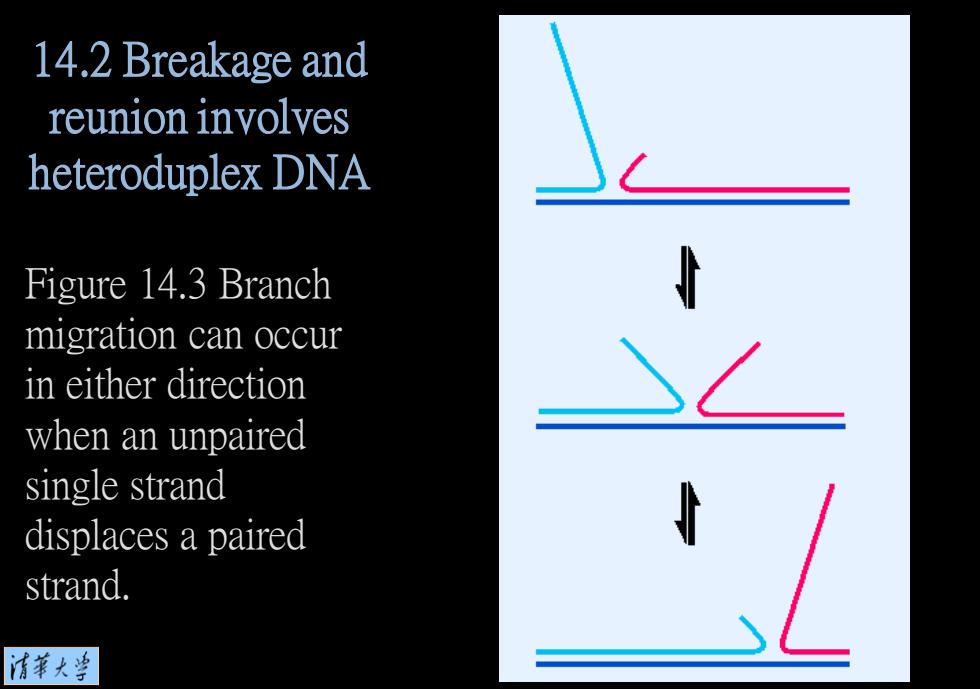
14.2 Breakage and reunion involves heteroduplex DNA Figure 14.3 Branch migration can occur in either direction when an unpaired single strand displaces a paired strand. 清苇大当
Figure 14.3 Branch migration can occur in either direction when an unpaired single strand displaces a paired strand. 14.2 Breakage and reunion involves heteroduplex DNA
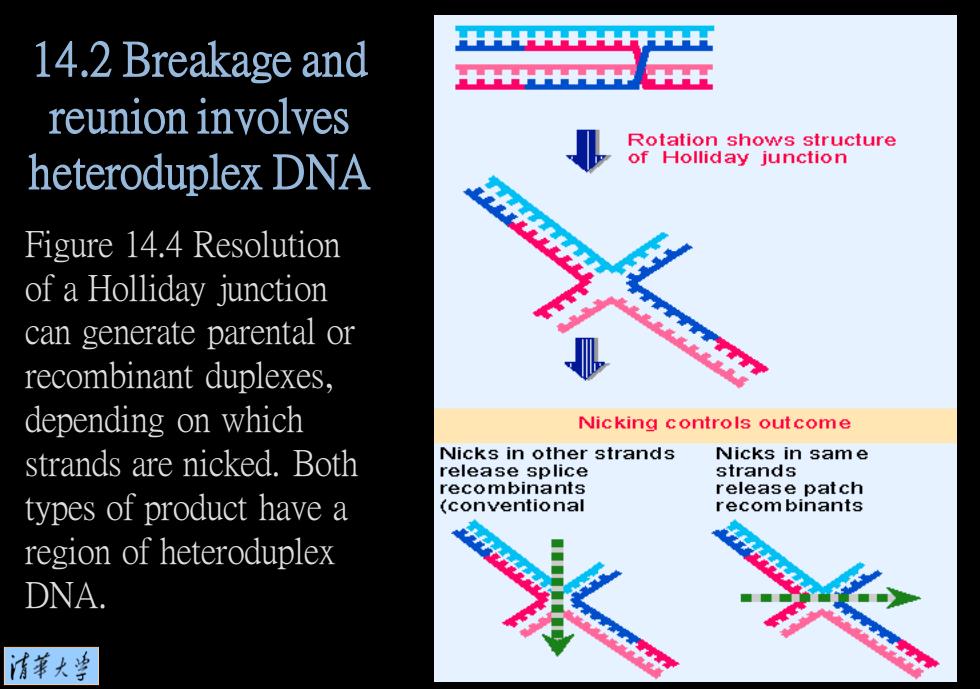
14.2 Breakage and reunion involves Rotation shows structure heteroduplex DNA of Holliday junction Figure 14.4 Resolution of a Holliday junction can generate parental or recombinant duplexes, depending on which Nicking controls outcome strands are nicked.Both Nicks in other strands Nicks in same release splice strands recombinants release patch types of product have a (conventional recombinants region of heteroduplex DNA. 清菜大当
Figure 14.4 Resolution of a Holliday junction can generate parental or recombinant duplexes, depending on which strands are nicked. Both types of product have a region of heteroduplex DNA. 14.2 Breakage and reunion involves heteroduplex DNA